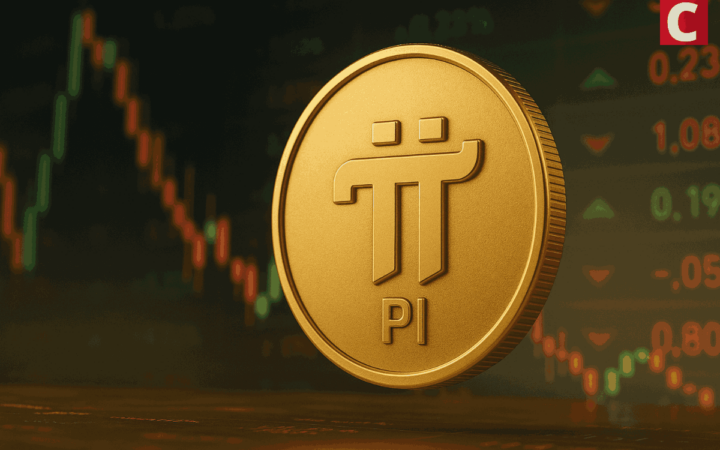ASIC guidance: 5 things to watch ahead of Treasury bill

ASIC guidance clarifies how Info Sheet 225 applies Australian financial‑services law to digital assets, giving firms earlier signposts on custody, licensing and classification. See original reporting: Decrypt report.
What does ASIC guidance in Info Sheet 225 change for digital asset regulation?
On 28 October 2025 ASIC published a revised Info Sheet 225 that expands how financial‑services laws apply to digital assets. The regulator replaced “crypto‑asset” language with the broader term “digital assets” and set out worked examples to guide assessments.
The update raises the number of worked classification scenarios from 13 to 18 examples, covering stablecoins, staking, wrapped tokens and tokenised products.
How does ASIC guidance change stablecoin custody rules and licensing?
What are the new custody thresholds?
The note sets new custody net tangible asset expectations, with proposed thresholds up to $10 million for firms with custodial roles. ASIC frames these as resilience and capital benchmarks for entities holding client assets rather than novel policy measures.
What about class relief and licensed intermediaries?
ASIC reiterated the September class relief that permits licensed intermediaries to distribute stablecoins from licensed issuers under conditions. That exemption is temporary while Treasury finalises statutory licensing under the forthcoming bills.
Tip: Firms offering custody or distribution should map operations to the worked examples and stress‑test capital against the new thresholds.
How will Australia crypto laws affect crypto custody obligations and decentralized finance oversight?
The guidance clarifies when existing financial‑services duties apply, so crypto custody obligations now have clearer benchmarks for licensing and disclosure. ASIC’s examples clarify distinctions between managed investment schemes, derivatives and non‑cash payment facilities for digital assets.
It also signals closer supervisory attention to DeFi arrangements: governance, fee models and user access can trigger licensing obligations where roles mirror regulated intermediaries. As industry participants noted, “The government has said it wants Australia to be a leader in digital assets, but it’s all about balancing consumer protections and innovation,” reflecting market reaction to the update.
What are the market implications ahead of Treasury’s digital asset platforms bill? In brief,
Expect higher compliance costs, clearer licensing pathways and stronger supervisory reviews for platforms and stablecoin intermediaries. The guidance tightens the regulatory baseline and anticipates statutory rules in Treasury’s Digital Asset Platforms and Payment Service Providers reform process.
In brief, the update raises the compliance bar and signals stronger supervision as Treasury moves to legislate formal licensing and custody rules.
You May Also Like

Why Is Pi Network Token (PI) Up 22% on Oct. 29?

German VDMA cautions U.S. tariff expansion will impact over 50% of machine exports

BNB Price Drops 2% as the Dex Volume Tumbles Cautioning Further Downside
Highlights: The BNB price is down 2% to $1111.46, despite the trading volume spiking 26%. The BNB on-chain demand has slipped, with the open interest plummeting 3% showing a drop in demand. The technical outlook shows a tight tug-of-war, with the bulls attempting to overcome resistance zones. The BNB price is down 2% today, to trade at $1111.46. Despite the plunge, the daily trading volume has soared 26% showing increased market activity among traders. However, BNB Chain has seen declining network activity, with the open interest plummeting, signaling a drop in demand. On Chain Demand on BNB Cools Off The BNB Chain is in a state of cooldown of network activity, which indicates low on-chain demand. In most instances, when a network fails to ensure large volumes or revenues, it means that there is low demand or outflows to other networks. BNB DeFi Data: DeFiLlama According to DeFiLlama data, the volume of the Decentralized Exchanges (DEXs) is down to at least $2.12 billion in comparison to the high of $6.313 billion on October 8, which also means low on-chain liquidity. On the other hand, Coinglass data shows that the volume of BNB has grown by 3.97% to reach $4.95 billion. However, the open interest in BNB futures has dropped by 3.36% to reach $1.74 billion. This reduction in open interest is an indication of a conservative stance by investors since the number of new positions being opened is low. This could be an indication that investors are not so sure about the short-term price outlook. BNB Derivatives Data: CoinGlass Meanwhile, the long-to-short ratio is sitting at 0.9091. This shows that the traders are undecided on BNB price’s next move, as it sits below 1. BNB Price Moves Into Consolidation The chart displays the BNB/USD price action on a 4-hour timeframe, with the token currently hovering around $1111.46. The 50-day Simple Moving Average (SMA) is at $1113, while the 200-day SMA sits at $1129, cushioning the bulls against upside movement. The price has mostly been trending below both SMAs, indicating that the bears are having the upper hand. The BNB trading volume is up, soaring 26%, signaling the momentum is real. On the 4-hour chart, BNB is trading within a consolidation channel. In such a case, this pattern may act as an accumulation period, giving the bulls hind wings to break above resistance zones. BNB/USD 4-hour chart: TradingView Zooming in, the Relative Strength Index (RSI) sits at 44.15, below the 50 level. This shows weakening momentum in the BNB market, and might lead to the RSI plunging to the oversold region if the bulls don’t regain control. In the short term, the BNB price could move up to $1113 resistance and flip it into support. A close above this zone will see the bulls target $1126 resistance, giving the bulls strength to reclaim the $1230 mark. Conversely, if the resistance zones prove too strong, a dip towards $1012 could be plausible. In such a case, this could be a prime buy zone for the risk-takers. In the long term, if the token keeps the hype alive, the bulls may reclaim the $1375 high or higher. eToro Platform Best Crypto Exchange Over 90 top cryptos to trade Regulated by top-tier entities User-friendly trading app 30+ million users 9.9 Visit eToro eToro is a multi-asset investment platform. The value of your investments may go up or down. Your capital is at risk. Don’t invest unless you’re prepared to lose all the money you invest. This is a high-risk investment, and you should not expect to be protected if something goes wrong.